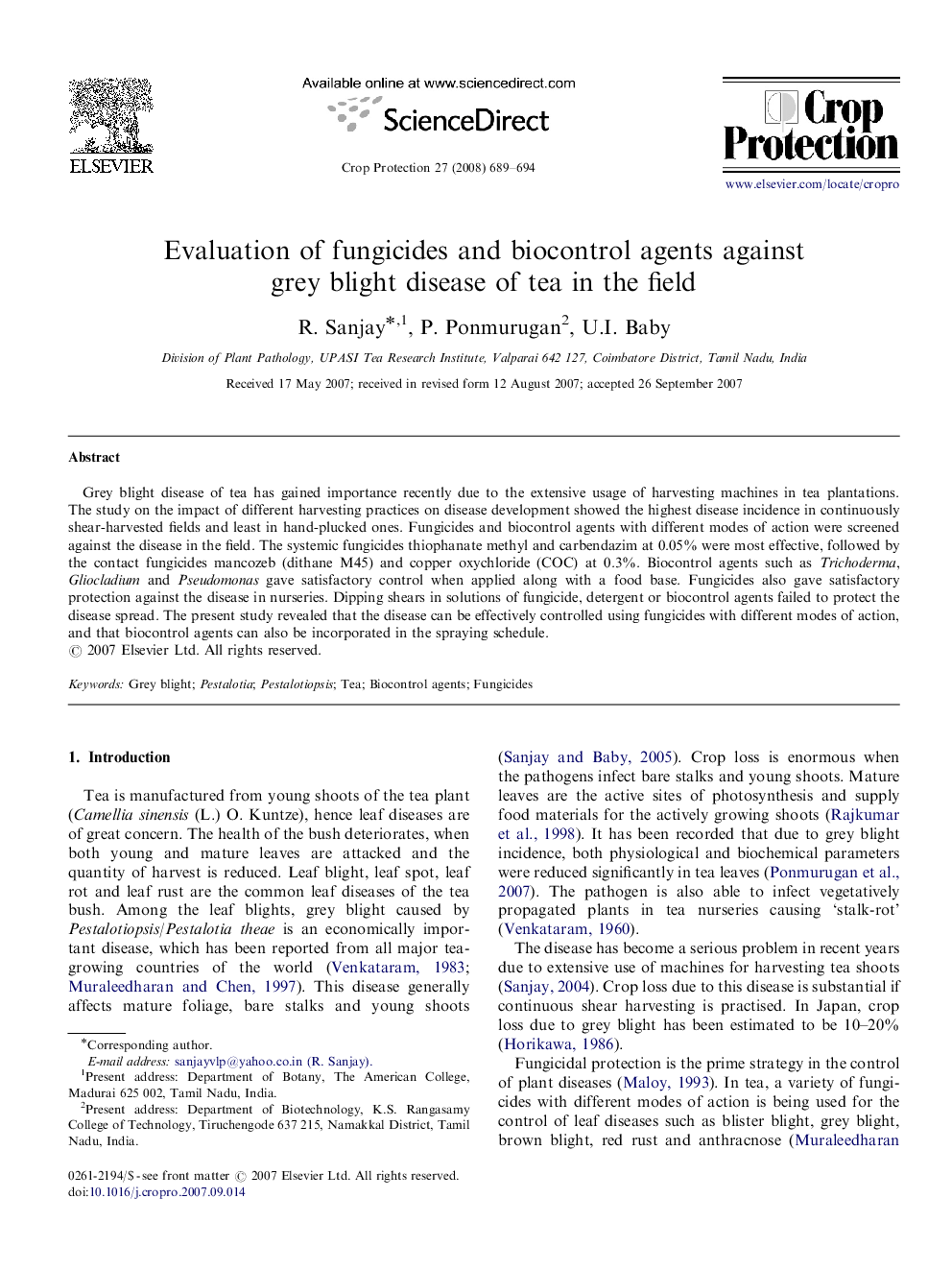| Article ID | Journal | Published Year | Pages | File Type |
|---|---|---|---|---|
| 4506967 | Crop Protection | 2008 | 6 Pages |
Grey blight disease of tea has gained importance recently due to the extensive usage of harvesting machines in tea plantations. The study on the impact of different harvesting practices on disease development showed the highest disease incidence in continuously shear-harvested fields and least in hand-plucked ones. Fungicides and biocontrol agents with different modes of action were screened against the disease in the field. The systemic fungicides thiophanate methyl and carbendazim at 0.05% were most effective, followed by the contact fungicides mancozeb (dithane M45) and copper oxychloride (COC) at 0.3%. Biocontrol agents such as Trichoderma, Gliocladium and Pseudomonas gave satisfactory control when applied along with a food base. Fungicides also gave satisfactory protection against the disease in nurseries. Dipping shears in solutions of fungicide, detergent or biocontrol agents failed to protect the disease spread. The present study revealed that the disease can be effectively controlled using fungicides with different modes of action, and that biocontrol agents can also be incorporated in the spraying schedule.
